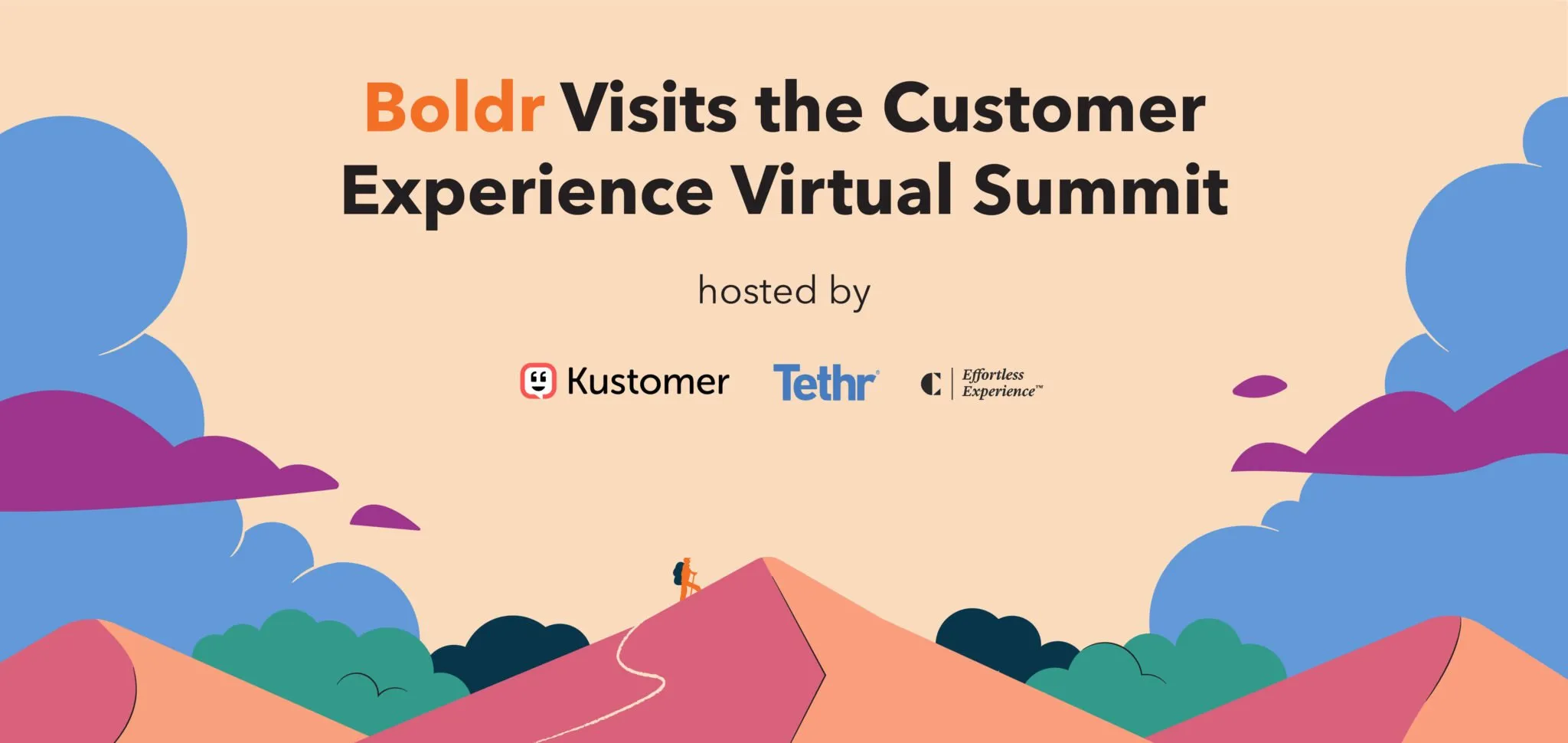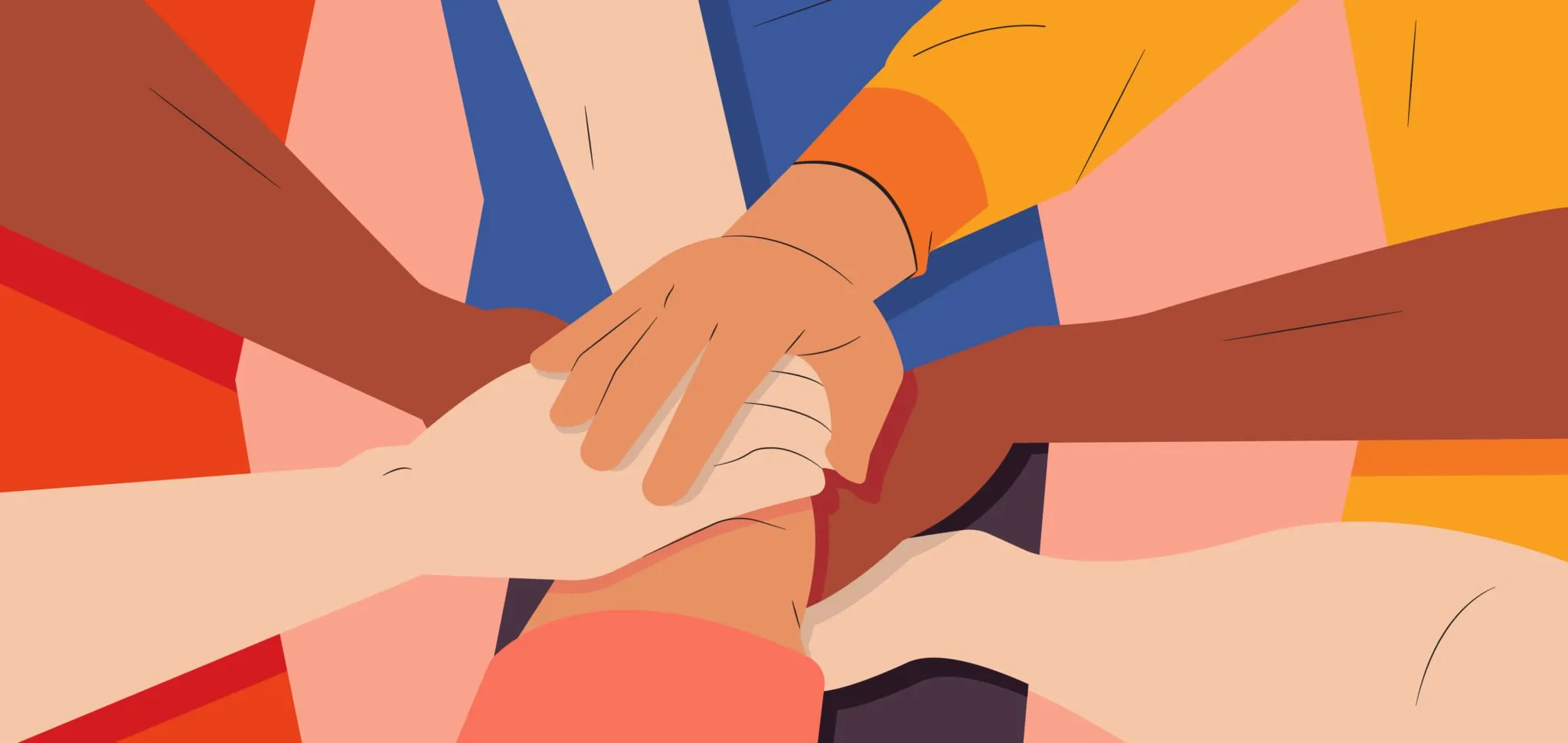A Quick Take on the 2020 Customer Experience Summit Hosted by Kustomer, Tethr, and Challenger:
Here at Boldr, we’re craving discussion and learning; as a mission-driven outsourcing company, part of the mission that drives us is the commitment to lifelong learning. Some of our favorite experiences — some of our most powerful learning experiences — are fueled by the opportunity to learn new ideas and new concepts through discussion and debate with new people, or at least, people we don’t interact with on a daily basis.
Which is why when we got wind of the 2020 Customer Experience Virtual Summit, we nearly started salivating at the lineup and at the opportunity to learn from some of the best thinkers in CX; and also, meet and learn from new people we otherwise may not have had access to.
What follows is a summary of the talks we attended and viewed; we started this as an effort in documenting some findings for our own team to learn from. After reviewing the wealth and breadth of information offered, we thought it would be helpful to turn this inward-facing document, outward. (Given that, if you see any spelling or grammar issues, please be generously forgiving.)
If you have the opportunity to view the talks, we encourage you to do so. If not, we hope the below helps spark your interest, catch you up-to-speed, or even, help guide you to some of the talks you may want to prioritize.
2020 Customer Experience Summit – Our Take in a Few Sentences
People.
Whether talking about how to provide excellent service, what it takes to provide excellent service, how to adapt your service so it remains excellent in extraordinary times, what excellent service actually means — the most consistent sentiment was the importance of your people.
The tools you provide them, the training and coaching you provide them, the guidance and flexibility you equip them with, and how well you prepare them for what may lie ahead, will ultimately determine how successful you are in providing an excellent customer experience going forward.
It sounds simple; because it is.
Yet this advice is still so valuable because though everyone already knows it, so few are actually operating against it.
2020 Customer Experience Summit – The Talks We Viewed
How to Manage Customer Experience in Challenging Times
Presented by: Brad Birnbaum, CEO, Co-Founder & Chairman, Kustomer; Matt Dixon, Chief Product and Research Officer, Tethr; Lauren Pragoff, Vice President, Effortless Experience™, Challenger
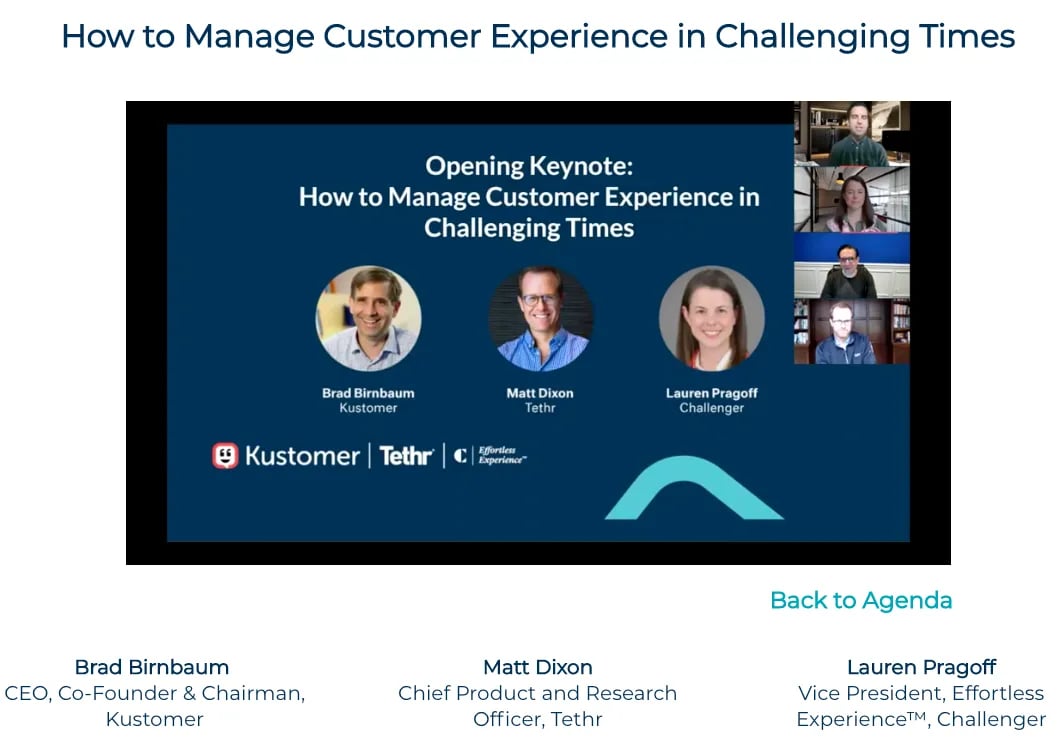
The Boldr Take in One Sentence: People matter more than ever; which is why the tools and training you give them will determine how excellent your CX can be.
Some Highlights:
Matt Dixon
-
Coaching customer representatives is critical for two reasons:
-
Reps need to be better equipped in knowing how to respond to the unique or unprecedented issues that customers are facing now.
-
It’s a way for employees to know that their company is there for them.
-
Customers are learning to help themselves. Since there have been a lack of instantly available customer reps, customers have been finding ways of helping themselves by going to the vendor’s or company’s website.
Brad Birnbaum
-
The focus now is to be able to do more with less, and making use of technology that is available.
-
When communicating to customers, all channels of communication should be maximized and considered –chat, phone or video call, text, email, etc.
-
With almost every service being conducted remotely, the challenge for offshore BPOs during this time is having the advanced technology needed to provide quality service.
Lauren Pragoff
-
Due to the business impact of the pandemic, some companies have started the following practices:
-
Finding ways to keep their people productive by assigning them to different roles or exploring what else they can do.
-
Being more proactive when communicating to their customers.
-
While there are many communication channels that are available to resolve issues, it is important to use the right channel. Not all issues go with any channel.
-
In a world dominated by technology, people matter now more than ever. Technology can still fail. So it’s important to keep people equipped.
The Effortless Experience: Conquering the New Battleground for Customer Loyalty
Presented by: Matt Dixon, Chief Products and Research Officer at Tethr
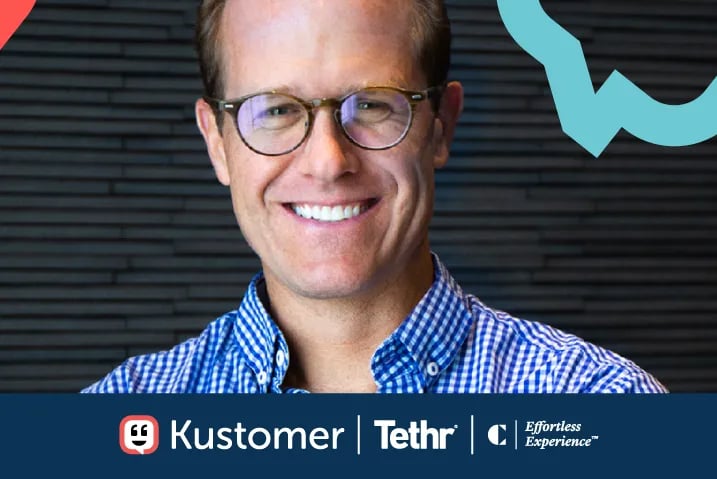
The Boldr Take in One Sentence: Pursuing delight is an expensive proposition that doesn’t drive the return you’d hope. Focus on meeting expectations and avoiding disloyalty before you think of delight and wow.
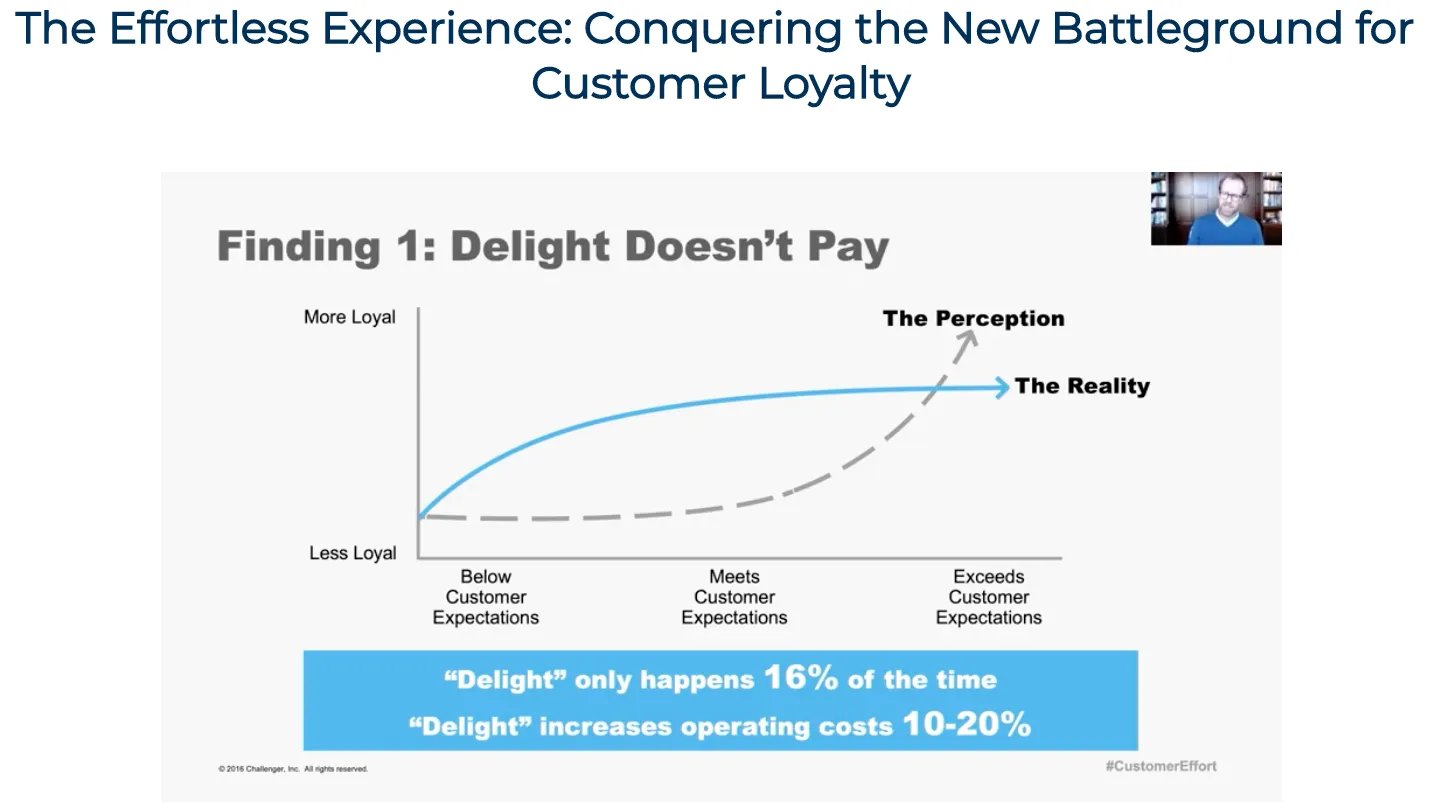
Some Highlights:
-
Instead of getting customer’s loyalty, focus on mitigating customer disloyalty by reducing the effort that customers have to put in to solve their issues.
-
A customer experience is bad when the customer has to put in a lot of effort to have the issue resolved.
-
A low effort experience is when customers get the answers right away.
-
Customers love self-service. They don’t really want to talk to reps. Majority as to why customers still end up calling is because they’ve been trying to figure out the issue, but have been unable to solve the problem using the initial resource (website or instructional material) provided to them.
-
Customers want ease over choice. Giving customers the choice will overwhelm them. Companies should focus on guiding their customers to use the right channel.
-
Avoid callback contact. Don’t just focus on resolving the issue now, but think of how to avoid the next issue from happening.
-
The most powerful technique to use right now is advocacy. Take a position of active support on behalf of the customer when communicating to them.
-
Look for Controllers over Empathizers for customer service roles. Controllers are those who are best in giving low-effort service to customers, because they can lead with expertise.
Transforming the Customer Experience… From the Inside Out
Presented by: Annette Franz, Founder and CEO at CX Journey, Inc.
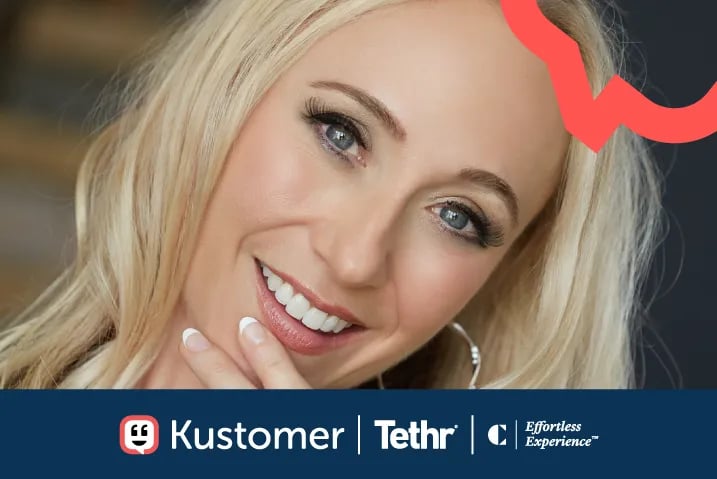
The Boldr Take in One Sentence: The best way to take care of your customers is to take care of and invest in the people supporting your customers: your employees.
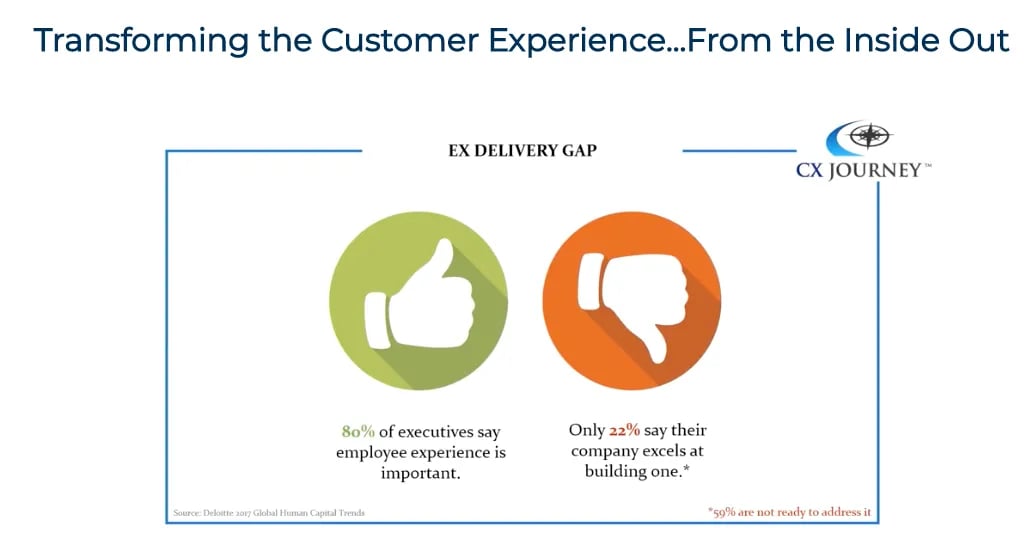
Some Highlights:
-
Customer experience is the sum of all the customer’s interaction with the organization (product, price, brand, etc.) It’s also the feelings, emotions, and perceptions the customer has with that interaction.
-
Employee experience starts from onboarding up until offboarding. It’s about keeping the employee informed and setting them up for success.
-
Take care of the people, and the numbers will come. If companies want to put customers first, then employees must come MORE first. They have to create an environment that puts their people first. Leaders should show it, model it, and behave it.
-
Companies should not view employees as a cog in the wheel to their success. They have to view their employees as humans and be treated accordingly. It’s important to get to know them, and not just see them as numbers.
-
If employees feel that they belong, are valued, appreciated, and have a sense of purpose, they’re able to service their customers better.
The Human Experience of Your Digital Customers
Presented by: Ben McCormack, Head of Customer Experience Management, FullStory
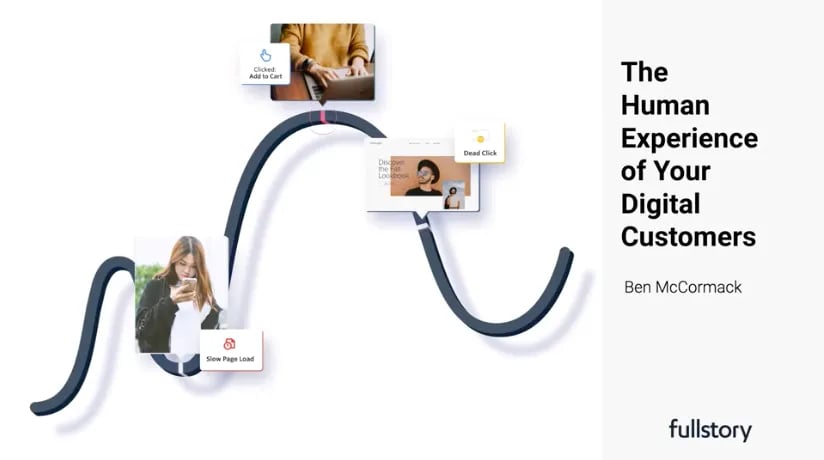
The Boldr Take in One Sentence: We have the information we need on our customers to provide them with excellent service they want; we are dropping the ball because we aren’t paying attention.
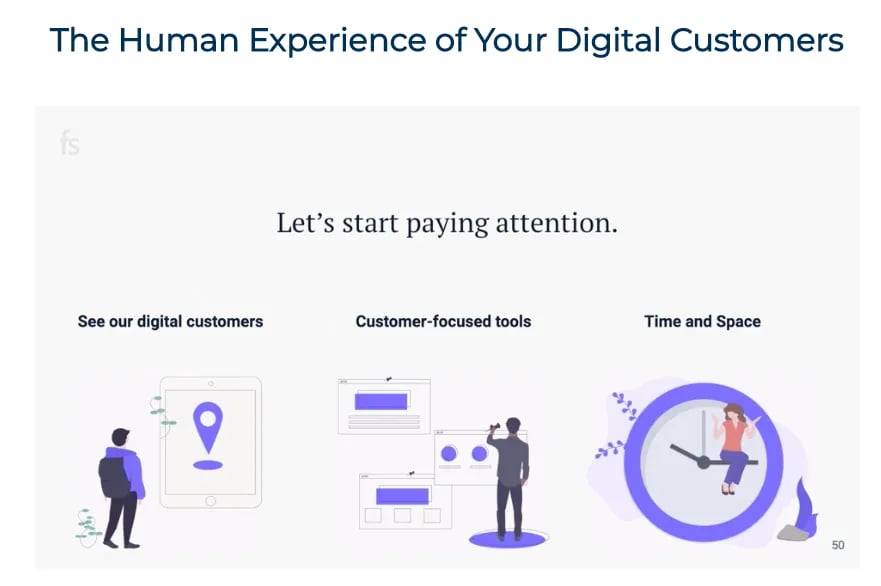
Some Highlights:
-
See your customers. Take the time to look at their experience.
-
Examine the stack of tools and technology available to make sure these are customer-focused tools. Tools shape the kind of experience customers have.
-
Take the time and space to make sure you’re focusing on your customers. Don’t just put yourself in your customer’s shoes, figure out how you can help them better.
-
You have the information you need; it’s about paying attention.
The Most Important Lever Contact Centers Aren’t Pulling
Presented by: Scott Rothman, Director, Challenger
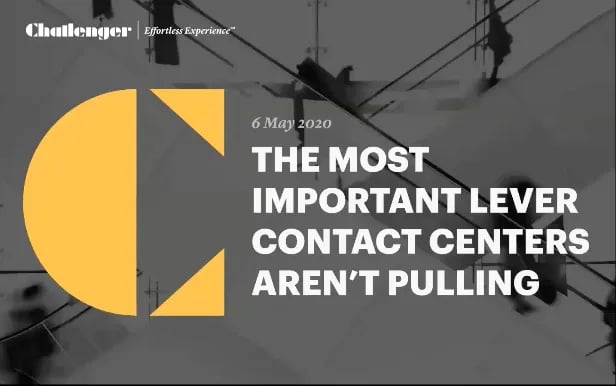
The Boldr Take in One Sentence: Coaching is the one way to improve the capacity of our team members to provide excellent customer service and help us build stronger relationships with our customers.
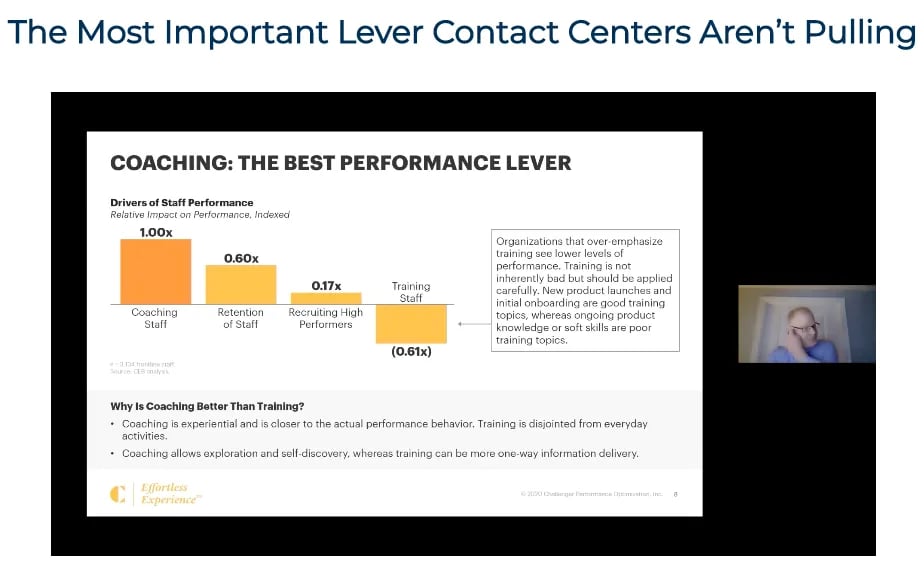
Some Highlights:
-
Customers are savvier than ever, leading them to have higher expectations on how call centers will solve their problems. People in contact centers need more guidance in dealing with this.
-
Coaching should be done right and effectively. It would be better to not coach at all than to do it poorly.
-
When performance is low, coaching trumps over training. Coaching is experiential and is closer to the actual performance behavior, while training is disjointed from everyday activities. Coaching also allows exploration and self-discovery, while training is more one way and focused on information delivery.
-
Coaching should be delivered with the purpose of upskilling and improving performance.
Forecast, Schedule, and Manage in a Highly Variable Environment
Presented by: Kaytlin Louton, Business Analyst, Assembled; Ryan Wang, Cofounder, Assembled; Nick Lane, WFM Consultant

The Boldr Take in One Sentence: You can’t plan for all outcomes, disruptions and scenarios, but you can create flexibility and run experiments that equip you to respond when the unprecedented does happen.
Some Highlights:
Nick
-
Come up with a concrete plan when building your workforce. Look for historical precedents.
-
Prepare as best you can for unprecedented situations. Create what if scenarios.
-
When unprecedented situations happen, prioritize the working outcomes. Choose what to focus on and what projects can be delayed.
-
Apply the data received as quickly as possible.
-
Prepare for the overflow of work by having a combination of heavy internal staffing with external outflow staffing. Have an outsource support in place to prepare you for this.
Ryan
-
During this time, the key is to have a flexible staffing plan. Have people who have the flexibility and adaptability to work on different tasks or jobs.
-
Future of support and workforce management? The challenge is finding the equivalent of engagement or having sense of team now that most people are working from home.
Managing Customer and Employee Engagement to Drive Loyalty
Presented by: Vipula Gandhi, Managing Partner at Gallup
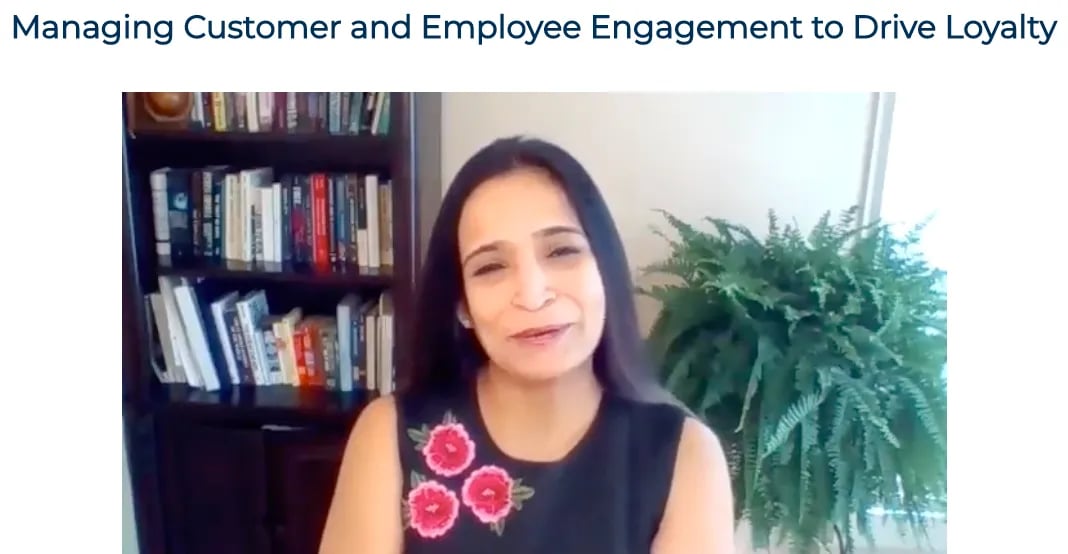
The Boldr Take in One Sentence: People’s emotional experience towards a brand is what will determine their brand loyalty.
Some Highlights:
-
We tend to focus more on managing the data rather than implementing the changes from the insights gathered from the data.
-
To customers, the feelings are facts. They make decisions largely on emotional factors. For example, it’s not so much the wait time that matters, but the time they felt they waited. How it makes you feel to be a customer of that brand that matters.
-
The rational aspect is often more put into focus over the emotional because it’s easier to grasp or measure the rational. The key is to put both together, tap in the emotional aspect and tie it back to the rational.
-
Complaints are opportunities. When people complain, there is an opportunity to increase the emotional engagement of the customer with the brand compared to before. The way that a representative will resolve a problem will make the emotional connection of the customer stronger.
-
We can’t give what we don’t have. Our people can’t provide happiness if they’re not happy or are treated well.
-
Advice for Customer Experience leaders at this time: Don’t take for granted what’s been done so far with your customers. Restart and redesign your customer experience. Use new channels, deliver a human experience to technology, keep your customers close, and listen to them.
The Most Important CS Skills to Build During Uncertain Times
Presented by: Anne Raimondi, Chief Customer Officer, Guru
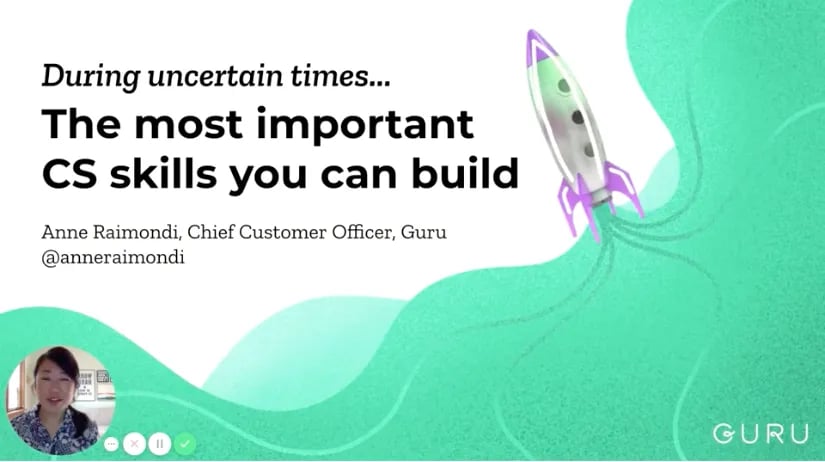
The Boldr Take in One Sentence: Empathetic listening, asking the right questions, and prioritizing what to work on are three important skills that companies need to have in order to be compassionate and build stronger relationships with their customers.
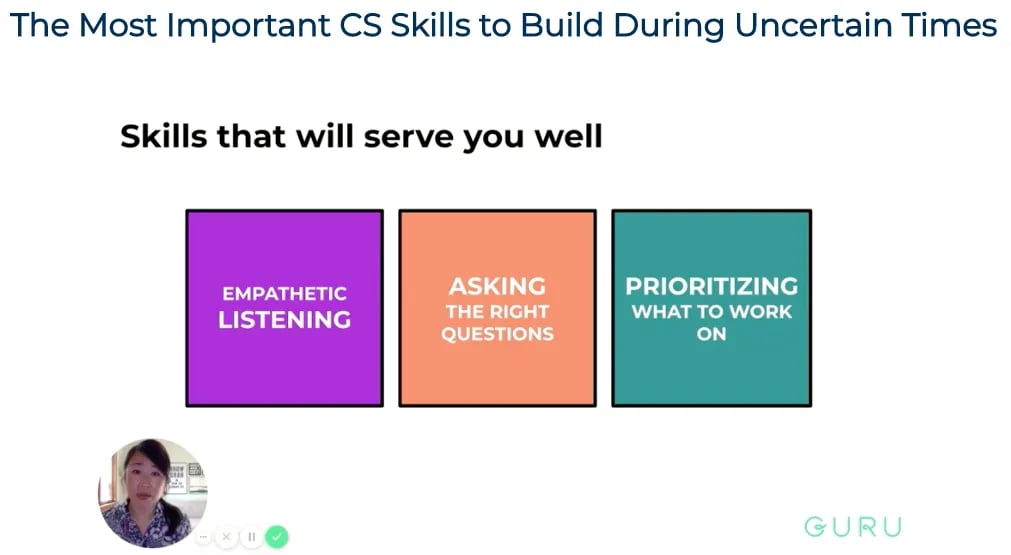
Some Highlights:
-
Empathetic listening means listening without jumping into conclusions, picturing and feeling what the other person is saying, and sharing gratitude.
-
Ask the right questions by using open-ended questions. Ask follow up questions, and play-back questions to make sure that you’ve heard the right thing.
-
Prioritize what to work on. Focusing on high impact quick delivery, ask what you can commit to doing in a reasonable amount of time. Ask how you can get creative and really make a difference. The concept of “frugal wows” is a way to think about ROI lean ways of delivering excellent value back to customers.
Satisfying the “Divinely Discontent Customer”
Presented by: Ted Mico, CEO, Thankful
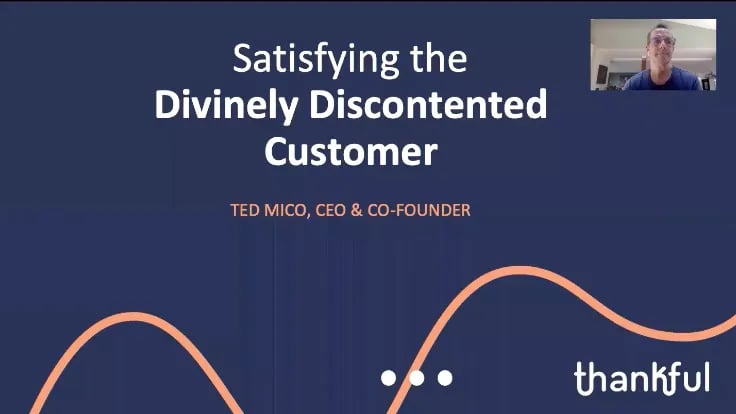
The Boldr Take in One Sentence: As divinely discontented customers’ expectations continue to grow, companies need to be quick, accurate, and efficient when it comes to resolving customer’s issues by taking advantage of technology that is available.
Some Highlights:
-
Customers are divinely discontented customers because expectations are never static; they only go up.
-
Speed and expertise need to work together in order to satisfy divinely discontented customers.
-
Understand the customer’s problems by knowing why they are reaching out to you.
-
Use the right AI. Make sure that it will make the work more efficient, rather than a hindrance. Find a way to maximise it. When done right, AI can really deliver contented, satisfied customers.
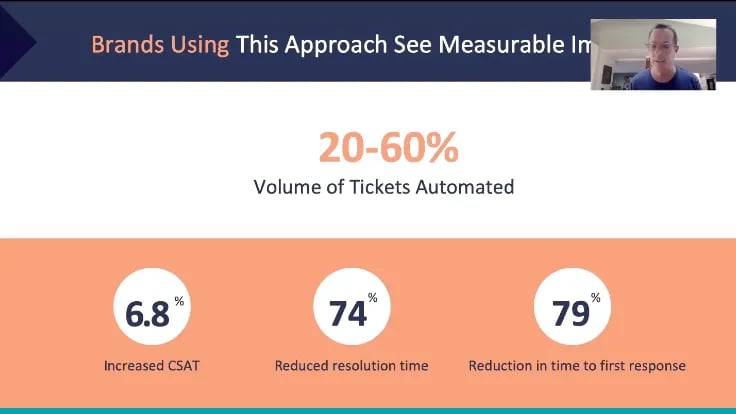
Small Words, Big Impact
Presented by: Lauren Pragoff, VP, Challenger Effortless Experience
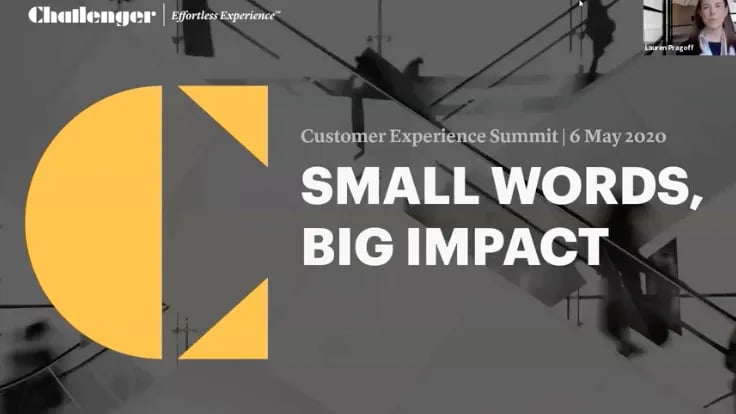
The Boldr Take in One Sentence: As with anything, context matters. It’s not enough to address a customer’s immediate concern as you need to address the “baggage” they’ve brought along with them from prior interactions and experiences.
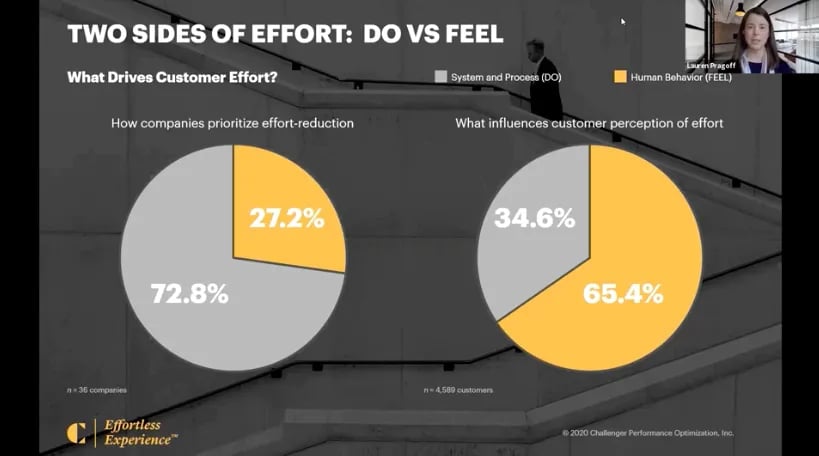
Some Highlights:
-
Delivering low-effort service requires representatives to address more than the customer’s current issue, but also past and future concerns.
-
Customers call you to have their problems resolved, so that should be the focus.
-
It’s important to surface and tackle the customer’s baggage head on. This is done by initially acknowledging the previous poor customer experience the customer may have had.
-
A customer baggage is worth acknowledging if it was recent and if it made an impact to the customer.
-
Impact is in the eye of the beholder. It is relative to how the customer views it.
-
Demonstrate advocacy and ownership, make customers feel that you are removing a burden from them.
What a Day!
We’re still working our way through the talks and will do our best to update any additional takeaways here. But it’s critical to thank the people who made this possible and pulled together an incredible virtual event with what I believe ended with well over 2,000 registrants.
As a company who helps our partners experiment with ideas, take processes to scale, and build global teams, we come across many of the companies featured here today. As users, as implementers, as partners — and sometimes just as fans.
Thanks for sharing your stories and insights with us all. We learned a lot. Thank you!
